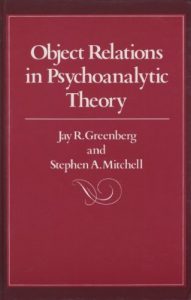Object Relations in Psychoanalytic Theory offers a conceptual map of the most difficult terrain in psychoanalysis as well as a history of its most complex disputes. In exploring the counterpoint between different psychoanalytic traditions, it provides a synthetic perspective that is a major contribution to psychoanalytic thought.
The focal point of clinical psychoanalysis has always been the patient’s relationships with others. How do these relationships come about? How do they operate? How are they transformed? How are relationships with others to be understood within the framework of psychoanalytic theory?
Jay Greenberg and Stephen Mitchell argue that there have been two basic solutions to the problem of locating relationships within psychoanalytic theory: the drive model, in which relations with others are generated and shaped by the need for drive gratification; and various relational models, in which relationships themselves are taken as primary and irreducible. The authors provide a masterful overview of the history of psychoanalytic ideas, in which they trace the divergences and the interplay between the two models and the intricate strategies adopted by the major theorists in their efforts to position themselves with respect to these models. They demonstrate further that many of the controversies and fashions in diagnosis and psychoanalytic technique can be fully understood only in the context of the dialectic between the drive model and the relational models.
The focal point of clinical psychoanalysis has always been the patient’s relationships with others. How do these relationships come about? How do they operate? How are they transformed? How are relationships with others to be understood within the framework of psychoanalytic theory?
Jay Greenberg and Stephen Mitchell argue that there have been two basic solutions to the problem of locating relationships within psychoanalytic theory: the drive model, in which relations with others are generated and shaped by the need for drive gratification; and various relational models, in which relationships themselves are taken as primary and irreducible. The authors provide a masterful overview of the history of psychoanalytic ideas, in which they trace the divergences and the interplay between the two models and the intricate strategies adopted by the major theorists in their efforts to position themselves with respect to these models. They demonstrate further that many of the controversies and fashions in diagnosis and psychoanalytic technique can be fully understood only in the context of the dialectic between the drive model and the relational models.












